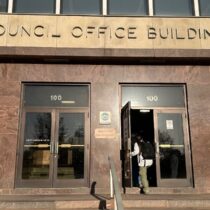
Montgomery County Planning Board, author of Thrive Montgomery 2050 which is designed to guide future planning throughout the county, considered racial justice and social justice issues and recommended “constructive ideas” when preparing its 93-page report, according to board officials.
On Wednesday, County Executive Marc Elrich blasted the plan, saying, “There is not a single, concrete remedy for how to address equity.” He also said the plan needs to state that there will be no net loss of affordable housing.
The Planning, Housing and Economic Development Committee’s draft plan does deal with inequity, wrote Casey Anderson, Montgomery County Planning Board Chair, and Gwen Wright, Montgomery County Planning Director, in a Feb. 15 letter they wrote in response to the county’s Office of Legislative Oversight’s assessment.
The plan, which must be adopted this summer, is a policy document that will not change zoning but instead recommends such things as transportation, housing, parks and recreation goals throughout the county. The Planning Board is a part of the Maryland -National Capital Park and Planning Commission.
The document has a section called “Promote racial and economic diversity and equity in housing in every neighborhood.” That section notes regulatory tools and financial incentives should be refined “with the goal of avoiding a net loss of market-rate and income-restricted affordable housing stock without erecting disincentives for the construction of additional units.”
It also discusses minimizing gentrification and displacement.
In the letter, the two officials said it would be “premature” to have a racial equity, social injustice impact study. “Thrive does not -and is not intended to – specify the detailed methods of implementing the broad concepts and policies.” They suggest more attention to implementation should come later.
The document does note that “Diversity and inclusion are essential to our economic success as well as to our ability to produce more equitable outcomes for all our residents, who deserve high quality housing, education, jobs, transportation, and recreational opportunities.”
In one section of Thrive 2050, it states, “The design of our communities can greatly influence levels of community cohesion and social interaction. Creating social capital requires the built environment to encourage and make it easier for people to meet others and engage in activities. For this reason, Thrive Montgomery 2050 emphasizes the roles streets, parks, and public spaces play in creating a physical environment where a sense of community can flourish.”
It also calls the promotion of racial equity and economic integration of neighborhoods “among the most significant elements of Thrive Montgomery 2050. Thrive Montgomery 2050 strives to create racially integrated and just communities.“
Related Post
Elrich: Proposed Thrive Montgomery 2050 Plan has No Remedy to Address Racial Equity


Comments are closed.